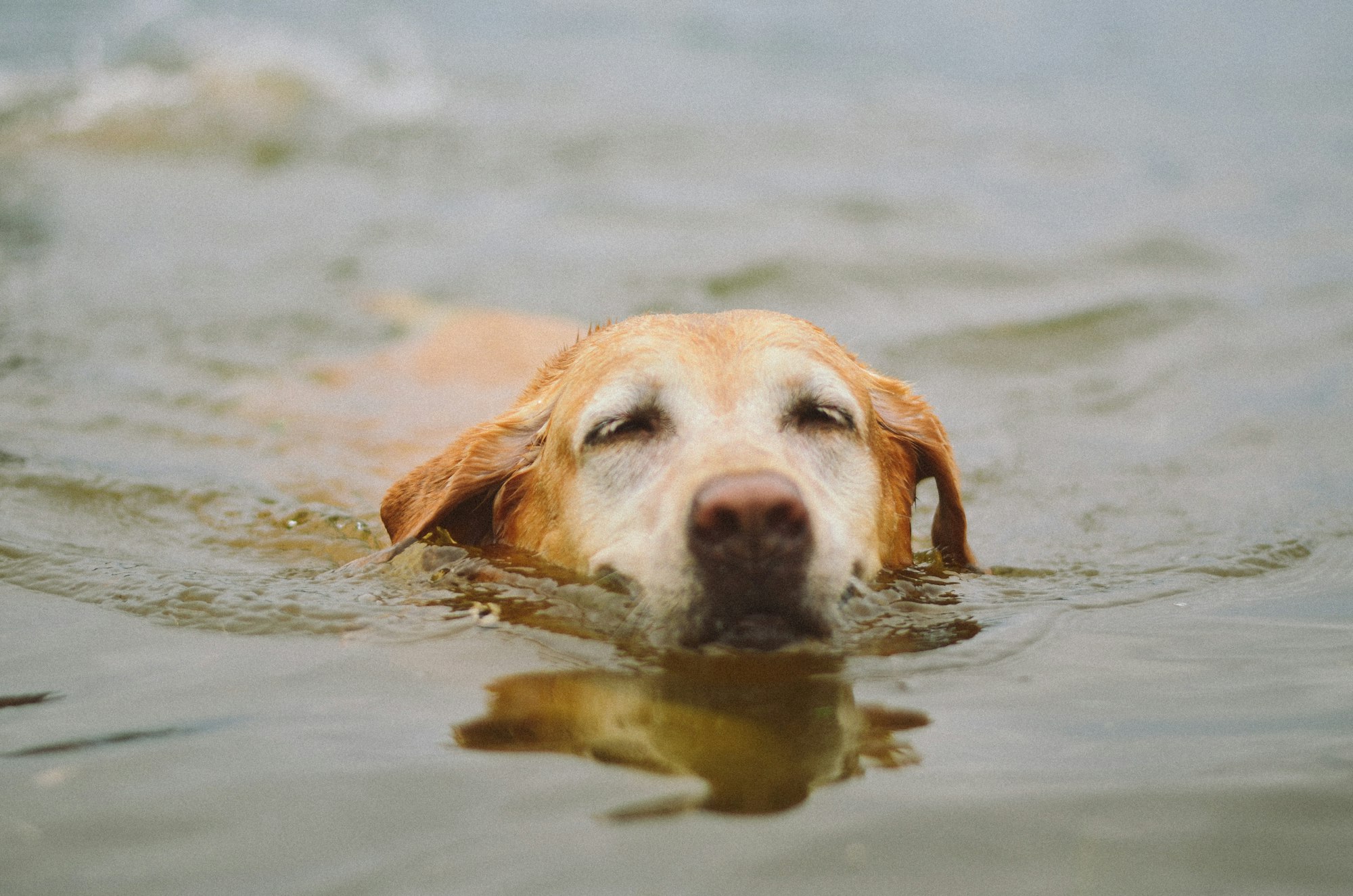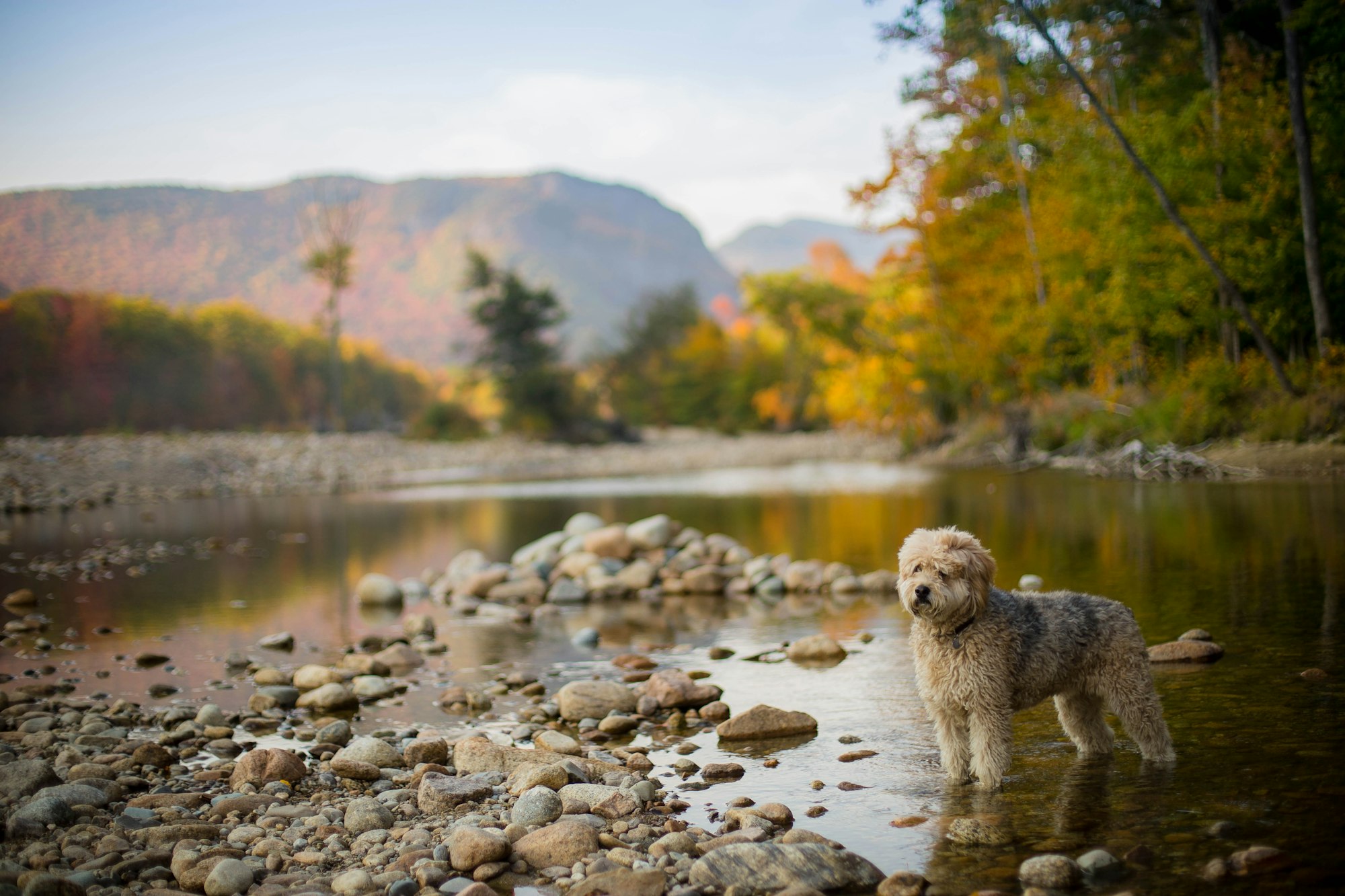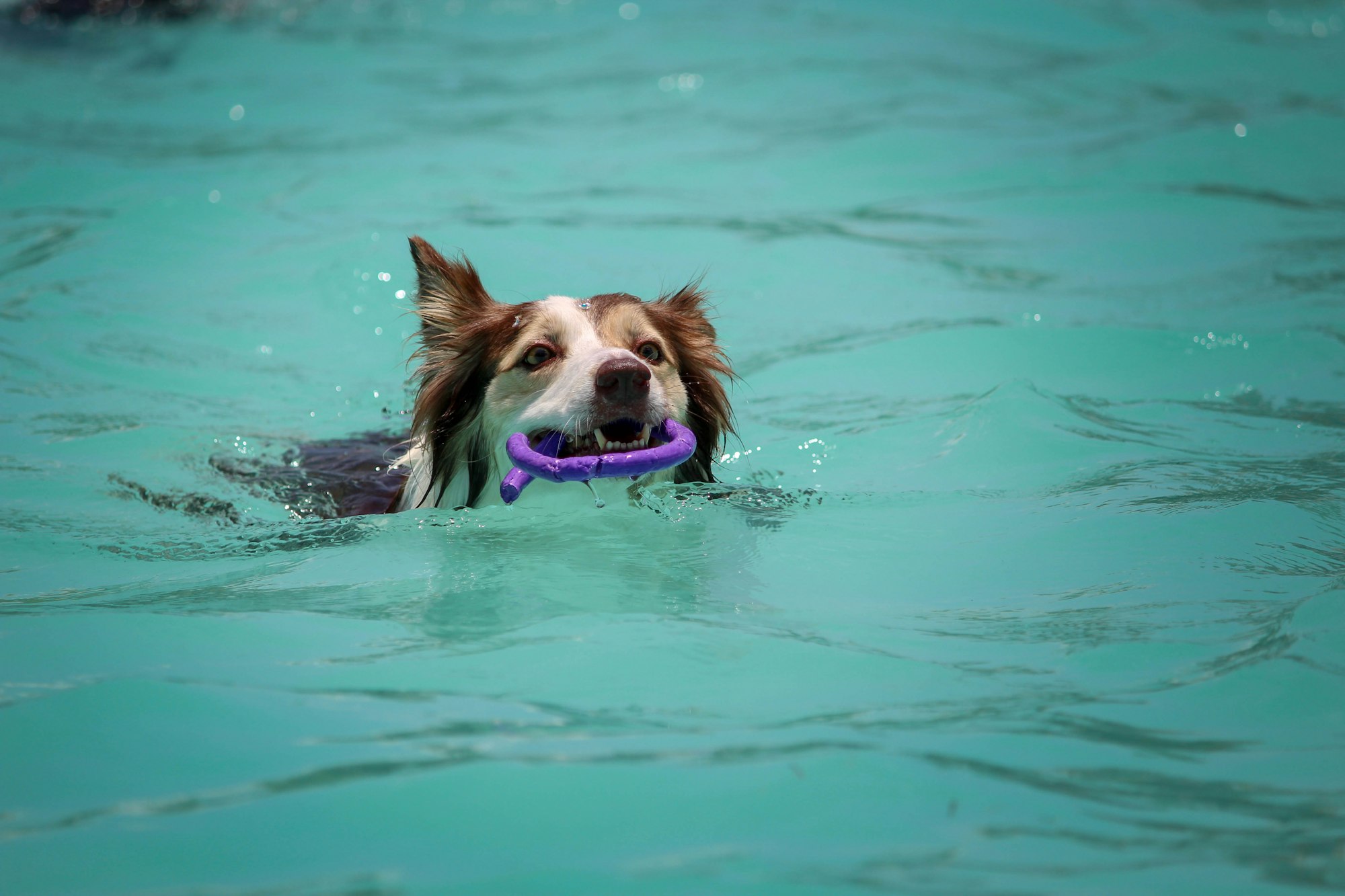As devoted dog owners, we know that our four-legged companions bring boundless joy into our lives. From playful romps in the park to cozy cuddles on the couch, our furry friends enrich our days in countless ways. One aspect of canine happiness that often piques our curiosity is their relationship with water. While not every dog is destined to be an Olympic swimmer, it is essential to ensure that our canine companions feel comfortable around water and possess basic swimming skills.

In this comprehensive guide, we'll delve into the world of water training for dogs, exploring the importance of overcoming water fear, the gradual exposure techniques, and the many benefits of incorporating water-based activities into your dog's life. So, let's dive in together and discover how fostering water confidence can lead to a safer, more enjoyable experience for both you and your beloved furry companion.
Understanding Dogs' Relationship with Water
Understanding a dog's relationship with water involves considering their breed's historical background and genetic predispositions. Breeds such as the Labrador Retriever, Portuguese Water Dog, and Newfoundland have a storied history with water, often bred for tasks such as retrieving, assisting fishermen, or performing water rescues. These breeds not only have the physical traits conducive to swimming, like water-repellent coats and webbed feet, but also an instinctual drive to engage with water.
- Breeds with a Natural Affinity for Water:
- Labrador Retriever: Bred for retrieving game in water, excellent swimmers.
- Portuguese Water Dog: Historically used by fishermen, adept at water tasks.
- Newfoundland: Known for water rescues, possesses a thick, water-resistant coat.
On the other hand, certain breeds show less enthusiasm towards water, which can be attributed to their physical and historical characteristics. Breeds like the Pug, Bulldog, and Dachshund might find water less appealing due to their shorter limbs, heavier bodies, or respiratory challenges, which can make swimming more difficult and less enjoyable.
- Breeds with a Natural Aversion to Water:
Despite these natural tendencies, the role of early exposure and positive experiences cannot be overstated in developing a dog's comfort with water. Introducing a dog to water in a positive, controlled manner, especially during their formative puppy years, can significantly influence their perception and enjoyment of water-based activities.
- Key Factors in Early Exposure:
- Gradual introduction to water, starting with shallow, calm environments.
- Consistent use of positive reinforcement to create enjoyable water experiences.
- Sensitivity to the dog's comfort level, allowing them to explore water at their own pace.
Understanding these aspects helps in tailoring approaches that align with a dog's natural inclinations while fostering a safe and enjoyable interaction with water.
Health and Safety Considerations
Ensuring the health and safety of your dog during and after water activities is paramount. One critical aspect often overlooked is hydration. Even though your dog is surrounded by water, they can get dehydrated quickly, especially on hot days or during vigorous play. Always provide fresh, clean drinking water and encourage your dog to take breaks to drink.
Waterborne diseases pose another risk. Lakes, rivers, and even pools can harbor bacteria, parasites, and other pathogens harmful to your dog. To minimize this risk, choose swimming locations wisely, avoiding stagnant or obviously polluted water. After swimming in a public pool, ensure it's well-maintained and the chlorine levels are safe for pets.
Monitoring your dog for signs of exhaustion or distress is crucial. Dogs, especially those enthusiastic about water, may not know their limits. Watch for excessive panting, difficulty staying afloat, or lack of coordination, and remove your dog from the water if you notice these signs.
Post-swim care is equally important. Rinse your dog off to remove chlorine, salt, or natural contaminants, which can irritate their skin or lead to infections. Pay special attention to drying their ears thoroughly, as moisture in the ear canal can lead to infections. Finally, do a quick check for any cuts, scrapes, or injuries that might have occurred during their water adventures. By following these health and safety tips, you can ensure a positive and safe water experience for your furry friend.
Understanding Your Dog's Water Anxiety
Conquering water fear reduces stress and anxiety, leading to a happier and more confident dog. The process strengthens the bond between you and your pet, as they learn to trust you during their water training. Moreover, teaching your dog to swim can be a life-saving skill in emergencies, ensuring their safety around water and providing you both with enjoyable aquatic adventures.
Factors That May Contribute to Your Dog's Fear of Water
Several factors could contribute to your dog's fear of water, and understanding these triggers can aid in tailoring a suitable training approach. Negative past experiences, such as accidental submersion or being caught in a strong current, can leave lasting traumatic impressions.
Some dogs may also develop water anxiety due to lack of exposure during their early socialization period. Additionally, specific breeds may have a predisposition towards water fear, as certain breeds were historically not bred for water-related activities. Furthermore, a dog's personality and temperament can play a role; naturally anxious or timid dogs may be more prone to developing water anxiety.
To address your dog's water anxiety effectively, it's essential to be patient and empathetic. Avoid pushing your dog into water-related situations forcefully, as this could exacerbate their fear. Instead, take a gradual approach, using positive reinforcement and creating a safe, calm environment to help your furry friend overcome their fear of water.
Remember, each dog is unique, and their journey towards water confidence will vary, so be prepared to tailor your training methods accordingly. With your love, support, and gentle guidance, you can help your dog build positive associations with water and turn their fear into newfound comfort and enjoyment.

Introducing Water to Your Dog in a Controlled Environment
When helping your dog become comfortable around water, it's essential to introduce them to aquatic environments in a controlled and stress-free manner. Start in a quiet and familiar location, such as your backyard or a calm pond, where you can maintain a sense of security. Allow your dog to explore the water's edge at their own pace without any pressure to jump in immediately. Keep them on a leash initially, so you have control over the situation and can ensure their safety.
Techniques for Building Positive Associations with Water
Creating positive associations with water is key to helping your dog overcome their fears. Use treats, toys, or praise to reward your dog for showing curiosity or interest in the water. Gradually coax them to take small steps, like dipping their paws into the water, and celebrate each achievement with encouragement. Offer verbal praise and gentle petting to reassure your dog throughout the process.
Make water play a fun and enjoyable experience for your furry friend. Consider bringing their favorite toys and engaging them in playtime near the water. Toss a toy into shallow water and let them retrieve it, further reinforcing the idea that water can be a source of excitement and joy. Patience is paramount during this gradual exposure; avoid rushing or forcing your dog into the water, as this may intensify their fear. Instead, allow them to progress at their own pace, celebrating each small victory along the way.

Initial Steps for Introducing Your Dog to Shallow Water
As your dog becomes more comfortable around water, it's time to introduce them to shallow water environments. Start by finding a calm and shallow area, such as a gentle shoreline or a shallow wading pool. This controlled setting will help ease your dog into the next phase of their water training journey. Keep them on a leash at first, offering a sense of security and allowing you to guide their movements.
Before stepping into the water, let your dog explore the water's edge and nearby surroundings at their own pace. Allow them to sniff, observe, and get accustomed to the new environment. You may notice some hesitation initially, which is entirely normal. Encourage them with verbal praise and rewards for any signs of curiosity or interest in the water. The key is to create positive associations, making the transition to shallow water an exciting and rewarding experience for your dog.
Building Trust and Confidence Near the Water's Edge
Building trust is vital when introducing your dog to shallow water. Stay close by and provide gentle reassurance as they venture further into the water. Offer a guiding hand, both figuratively and literally, as you support them through the process. If your dog is hesitant, avoid pulling or tugging on the leash, as this could increase their anxiety. Instead, use a calm and patient demeanor to instill confidence.
As your dog becomes more comfortable, gradually lead them deeper into the shallow water. Use positive reinforcement to reward their progress and celebrate every achievement, no matter how small. Your presence and encouragement will play a significant role in boosting your dog's confidence and trust in the water. Remember that each dog progresses differently, and some may take more time than others to fully embrace shallow water. Be patient and persistent, allowing your dog to set the pace for their own comfort and development.
By establishing trust and building confidence near the water's edge, you set the foundation for your dog to explore shallow water with enthusiasm. As they become more at ease in these environments, they will be better prepared for more substantial water challenges, such as swimming, in the future. Stay attuned to your dog's reactions and emotions, as their body language will communicate their readiness to venture further into the water. With your guidance and support, your beloved canine companion will soon embrace the joys of aquatic adventures.
Initial Steps for Introducing Your Dog to Shallow Water
As your dog becomes more comfortable around water, it's time to introduce them to shallow water environments. Start by finding a calm and shallow area, such as a gentle shoreline or a shallow wading pool. This controlled setting will help ease your dog into the next phase of their water training journey. Keep them on a leash at first, offering a sense of security and allowing you to guide their movements.
Before stepping into the water, let your dog explore the water's edge and nearby surroundings at their own pace. Allow them to sniff, observe, and get accustomed to the new environment. You may notice some hesitation initially, which is entirely normal. Encourage them with verbal praise and rewards for any signs of curiosity or interest in the water. The key is to create positive associations, making the transition to shallow water an exciting and rewarding experience for your dog.
Understanding Common Setbacks in Water Training
During your dog's water training journey, it's essential to be prepared for potential setbacks and challenges. Each dog is unique, and some may face obstacles in their path to water confidence. Common setbacks may include sudden fear reactions, reluctance to progress, or a refusal to enter the water altogether. As your dog's trainer and caregiver, it's crucial to recognize these hurdles and address them with patience and understanding.
Strategies for Overcoming Obstacles and Fears:
- Stay Calm and Patient: When facing setbacks, maintain a calm and patient demeanor. Your dog can sense your emotions, and staying composed will help reassure them and prevent escalating their anxiety.
- Identify Triggers: Pay attention to potential triggers that cause fear in your dog. These triggers may be specific sounds, movements, or objects associated with water. Identifying them allows you to gradually desensitize your dog to these stimuli.
- Create a Positive Environment: Ensure the training environment remains positive and stress-free. Avoid forcing your dog into water-related situations and instead focus on providing encouragement, rewards, and praise when they display curiosity or progress.
- Go at Their Pace: Every dog has their own pace of learning and adjusting to water. Respect your dog's individual journey and avoid pushing them beyond their comfort zone prematurely.
- Revisit Previous Steps: If your dog experiences fear or hesitancy, it may be beneficial to backtrack to a previous step in their water training. Reinforce positive associations before moving forward again.
- Seek Professional Assistance: If you encounter persistent challenges, consider seeking the guidance of a professional dog trainer or behaviorist with experience in water anxiety. They can provide tailored advice and support based on your dog's specific needs.
- Build Trust through Bonding: Strengthen your bond with your dog outside of water training. Engaging in activities they love and offering consistent positive reinforcement will enhance their overall confidence and trust in you as their caregiver.
- Celebrate Small Victories: Recognize and celebrate even the smallest achievements in your dog's water training journey. Positive reinforcement and encouragement are essential tools in overcoming fears and building confidence.
Remember, setbacks are a natural part of the learning process, and water training may take time and persistence. By approaching challenges with empathy and utilizing effective strategies, you can help your dog navigate obstacles, building a solid foundation for their water confidence and ensuring a positive and enjoyable experience in and around the water.
Conclusion
In conclusion, guiding our canine companions towards becoming comfortable and confident around water is a journey filled with its own set of challenges and triumphs. As we've explored, understanding our dogs' natural inclinations towards water, ensuring their health and safety, addressing water anxiety, and introducing them to water in a controlled, positive manner are fundamental steps in this process. By acknowledging the unique traits and needs of each dog, we can tailor our approach to help them overcome fears and embrace the joys of aquatic activities.
The journey towards water confidence is not just about teaching our dogs to swim; it's about enhancing their quality of life, ensuring their safety, and opening up a new realm of activities that can be enjoyed together. It's a testament to the bond we share with our furry friends, built on trust, patience, and mutual respect.
As we conclude this guide, remember that every small step your dog takes towards becoming comfortable with water is a victory worth celebrating. With your support, encouragement, and understanding, your dog can learn to not only navigate water safely but also to find joy in the splash of each wave and the cool embrace of each swim. Here's to many happy, wet-tailed adventures ahead with your beloved water-loving companion!
FAQs
- What breeds are naturally good swimmers?
- Breeds like Labrador Retrievers, Portuguese Water Dogs, and Newfoundlands are known for their natural affinity for water, thanks to their historical roles and physical traits such as water-repellent coats and webbed feet.
- Can dogs that naturally dislike water learn to enjoy swimming?
- Yes, even breeds less inclined towards water can learn to enjoy swimming. Early, positive exposure and gradual acclimatization can help overcome their initial hesitance.
- How can I ensure my dog stays hydrated during water activities?
- Despite being surrounded by water, dogs can get dehydrated quickly. Always provide fresh, clean drinking water and encourage breaks for your dog to drink, especially on hot days or during vigorous play.
- What are the signs of waterborne diseases, and how can I protect my dog?
- Symptoms can include vomiting, diarrhea, and lethargy. Protect your dog by choosing clean, safe swimming locations and avoiding stagnant or polluted water.
- How can I tell if my dog is getting too tired while swimming?
- Signs of exhaustion include excessive panting, difficulty staying afloat, and lack of coordination. If you notice these signs, it's time for your dog to take a break from swimming.
- What should I do if my dog seems afraid of water?
- Address water fear by introducing your dog to water gradually, using positive reinforcement like treats and praise, and ensuring the experience is calm and stress-free. Never force your dog into the water as it can exacerbate their fear.
- How do I care for my dog after swimming?
- Rinse your dog off to remove chlorine, salt, or natural contaminants. Dry their ears thoroughly to prevent infections, and check for any cuts or scrapes that might need attention.

